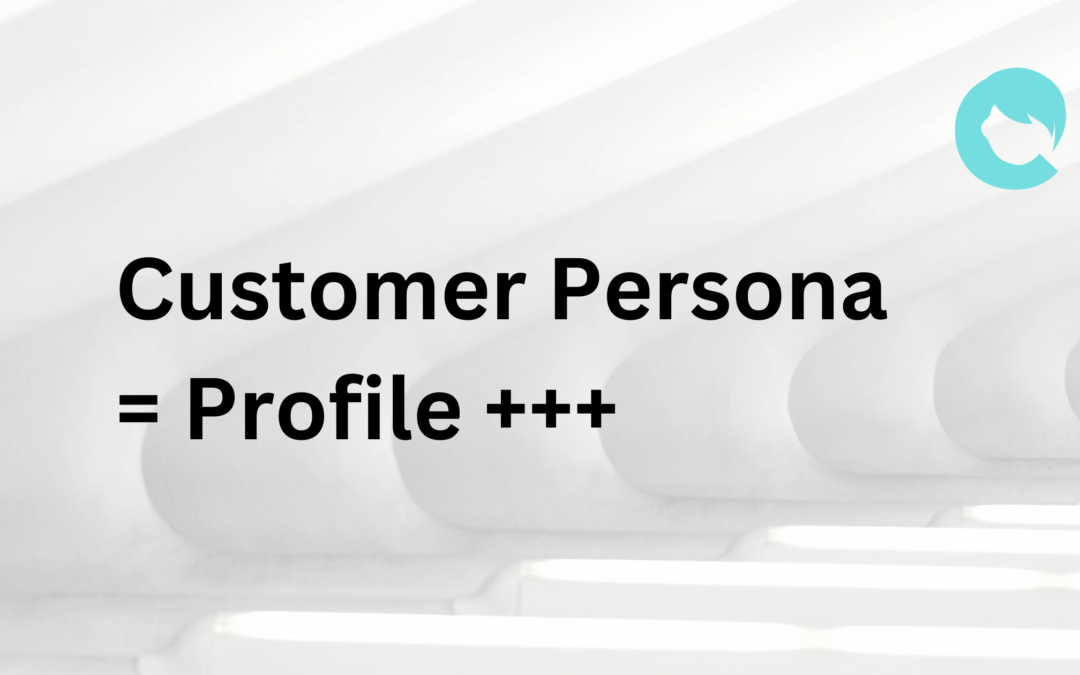Many businesses know about customer profiles—basic descriptions of their customers, like age or gender. But customer profiles alone don’t give you the full picture.
To truly connect with your customers and understand what drives them, you need customer personas.
Personas go beyond demographics to capture your customers’ needs, motivations, and behaviors.
Whether you are running a B2C or B2B business, doing customer personas right can transform how you market, sell, and serve your audience.
Let me show you how it work, using an e-commerce business for illustratiion/
Customer Profiles vs. Customer Personas
A customer profile might tell you:
- Female, 35-45 years old
- Lives in urban areas
- Household income of $75,000+
- Interested in fashion
This is helpful, but it doesn’t tell you why she shops with you, what frustrates her, or how she decides what to buy.
A customer persona, on the other hand, brings this profile to life:
Persona Example: “Busy Sarah”
- Age: 38
- Occupation: Marketing Manager
- Lifestyle: Juggling a demanding career and two kids, Sarah shops online because it’s convenient. She’s always looking for time-saving solutions.
- Challenges: Sarah doesn’t have time to compare options. She’s overwhelmed by too many choices and values quick, easy shopping experiences.
- Buying Behavior: She prefers mobile shopping and trusts reviews and recommendations.
- Motivations: Sarah values simplicity, free shipping, and fast delivery.
Do you see the difference?
While a profile tells you who your customer is, a persona tells you how and why they make decisions. This deeper insight helps you connect with customers in a more personalized and meaningful way.
When Should Customer Personas Be Used?
Customer personas are often thought of as a tool for launching new products, services, or businesses. While that’s true, they’re much more versatile.
Here are several scenarios where personas are valuable:
- Launching a New Product or Service: Personas help you understand exactly who you’re targeting and how to craft your messaging to appeal to their needs.
- Revamping Your Marketing Strategy: If your business has been around for a while and your marketing isn’t yielding the results it once did, it might be time to revisit who your customers are today. Personas can refresh your approach, allowing you to reconnect with your audience.
- Expanding into New Markets: Personas help ensure that your product or service resonates with local buyers.
- Improving Customer Retention: Even for established businesses, personas help fine-tune customer service, loyalty programs, and overall engagement. Understanding why customers come back—or why they don’t—enables you to address their needs and improve retention.
- Navigating Changes in Customer Behavior: Markets shift, and customer expectations evolve. Whether it’s due to new technology, cultural shifts, or a global event, personas allow you to adapt your strategies and stay relevant in a changing landscape.
Personas are not just for new ventures; they’re equally important for businesses that want to stay competitive and grow over time.
B2C Scenario: Expanding Product Lines
If you’re adding a new line of sustainable products, personas help you understand which customers care about eco-friendly materials.
For example, if one of your personas values sustainability, you can target that group with messaging that highlights your commitment to the environment.
B2B Scenario: Serving Merchants on an E-Commerce Platform
Now, imagine you’re running an e-commerce platform that serves merchants (a B2B context). These merchants could be small businesses or larger retailers using your platform to sell their products.
Persona Example: “Small Business Steve”
- Business Type: Online boutique selling handmade jewelry
- Challenges: Steve struggles with managing inventory, getting visibility on the platform, and competing with larger merchants.
- Goals: He wants better tools for showcasing his products, marketing support, and help with fulfillment to streamline operations.
- Behavior: Steve prefers self-service options but values a support team when he’s stuck.
- Motivations: Steve wants to grow his customer base and needs tools that make his life easier.
By understanding Steve’s needs, you can create tailored solutions on your platform—like offering marketing tools and visibility features that help smaller merchants succeed.
Why Are Customer Personas So Important?
- Tailored Experiences: If “Busy Sarah” values simplicity, your e-commerce site should make it easy for her to find what she needs quickly. For “Small Business Steve,” offering personalized onboarding and tutorials helps him feel supported on your platform.
- Targeted Marketing Campaigns and Messages: Sarah might appreciate an email focused on “Time-Saving Fashion Finds,” while Steve might prefer tips on boosting his store’s visibility during peak shopping seasons.
- Better Product Development: For Steve, you might introduce new marketing tools on your platform, while for Sarah, your online store might offer curated, time-saving product recommendations.
- Improved Customer Retention: Whether it’s a B2C shopper like Sarah or a B2B merchant like Steve, understanding their needs helps you serve them better, increasing the chances they’ll stick with your brand or platform.
Customer Persona = Profile +++
Customer personas are far more than just profiles.
Whether you’re selling directly to consumers or serving other businesses, they are the key to:
- Delivering personalized experiences
- Creating targeted marketing campaigns
- Developing features that truly meet your customers’ needs
By creating and using personas, you’ll not only increase engagement but also build loyalty, helping you grow, adapt and stay competitive.
This article is written by Christina Lim, the author of the book Not a Marketing Textbook.


Recent Comments